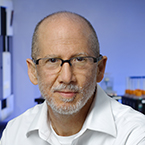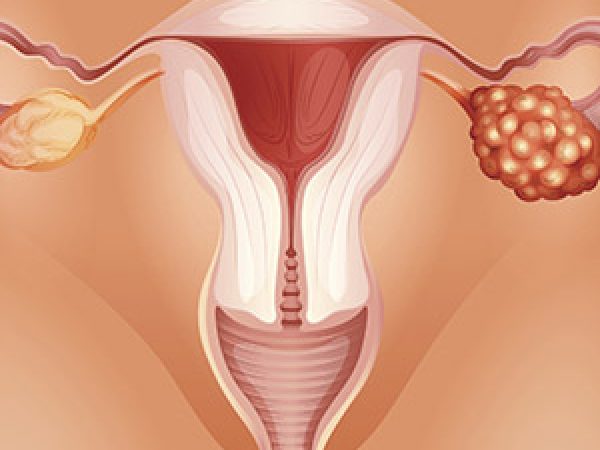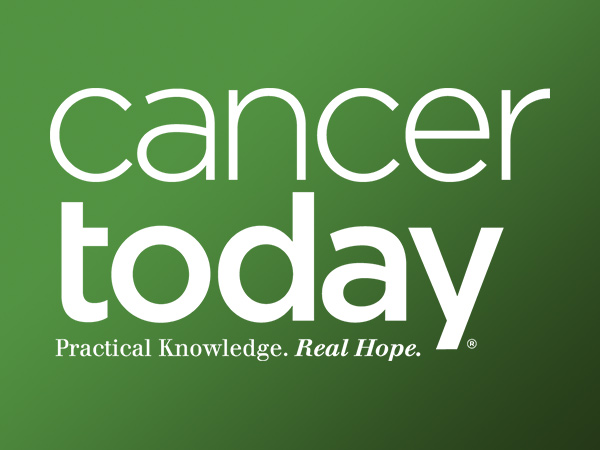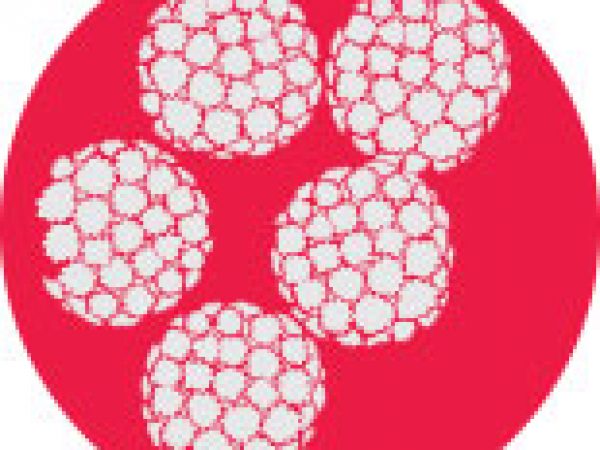Early Detection Research Network Marks 20 Years
This month, the Early Detection Research Network (EDRN) marks its 20th anniversary. The National Cancer Institute (NCI) launched the network in 2000 with the goal of identifying and harnessing biomarkers as a way of detecting cancer at earlier stages. Today, the network comprises more than 300 researchers at cancer centers around the United States.
Many biomarker tests or devices that originated through EDRN research have been approved by the U.S. Food and Drug Administration (FDA), including assays for prostate cancer, ovarian cancer, and liver cancer. Dozens more are in use in laboratories.
To commemorate the network’s 20th anniversary, Cancer Epidemiology, Biomarkers & Prevention, a journal of the American Association for Cancer Research (AACR), has produced a special CEBP Focus section, highlighting numerous ways EDRN research led to progress against cancer. NCI leaders and several renowned researchers who have been at the forefront of cancer prevention research took a moment to reflect on the network’s 20 years of collaboration.
Norman E. Sharpless, MD
Director, National Cancer Institute
Bethesda, Maryland
Philip E. Castle, PhD, MPH
Director, National Cancer Institute Division of Cancer Prevention

In the past 20 years, cancer biomarker research created new ways to identify precursors to cancer and cancer at earlier stages of development, recognize the etiology and course of disease, and track the effectiveness of treatments. The NCI supports a broad portfolio of research aimed at improving detection and diagnosis of cancer and its precursors. This research includes studies to improve the early detection of cancer as well as to accurately assess how likely it is that a precancerous growth will progress to life-threatening disease. These goals led to the establishment of the NCI’s Early Detection Research Network.

Early detection is a proven strategy for saving lives from cancer. Some patients whose cancers are detected and treated early may have better long-term survival than patients whose cancers are not found until symptoms appear. Tests like low-dose computed tomography for those at increased risk of lung cancer and colonoscopy for colon cancer are proven to reduce deaths from these diseases. Reductions in colon cancer cases and deaths are directly related to the removal of polyps found during examination. Pap tests and human papillomavirus (HPV) tests have averted millions of cervical cancers.
Unfortunately, effective screening tests do not exist for many cancers. And for existing tests, there is the small but real risk that patients are exposed unnecessarily to the potential physical harms of unwarranted and invasive diagnostic tests and treatment. EDRN works to develop new screening tests for those cancers for which there is not one currently available, and to improve the accuracy of existing screening tests.
EDRN’s main objective is to accelerate biomarker use, while allocating federal government funds toward the most promising projects to maximize results efficiently and quickly. EDRN also serves as a brake for unsubstantiated claims for biomarkers that turn out to be inferior or not useful for a stated clinical purpose.
Since EDRN began in 2000, it has had a role in the development of eight tests or diagnostics that went on to secure FDA approval, and 19 lab-developed protocols and tests available at authorized laboratories. These biomarkers and tests improve the detection of consequential lesions; reduce unnecessary biopsies; detect early lesions more amenable to treatment; and serve as “adjuncts” to the standard-of-care screening for greater accuracy. For example, for prostate cancer screening, EDRN researchers have devised tests to reduce the need for biopsies or repeat biopsies in men at risk for the disease. In ovarian cancer, EDRN scientists developed tests that can more accurately predict if a mass is cancerous or not, helping to make the decision about the need for invasive surgery.
EDRN’s pipeline and process for biomarker development are very rigorous and include timely advice from the research community. Highly promising biomarkers are brought for discussion and presentation at AACR meetings, including almost every AACR Annual Meeting since 2001. Many EDRN researchers are AACR members and supporters.
EDRN helps the NCI reach its ongoing mission: to understand the biology of cancer and to use this knowledge to help people live longer, healthier lives. We look forward to the progress that EDRN will continue to make in the years to come.
Ernest Hawk, MD, MPH
The University of Texas MD Anderson Cancer Center
Houston

The early detection of cancer is one of the key principles underlying effective cancer management in 2020. Logic suggests, and observational and experimental data have in most instances confirmed, that the earlier a chronic disease process, such as cancer, can be identified, the more likely it is to be effectively managed.
But assuring the fruitful and timely bridge between the discovery of key cancer characteristics (i.e., cancer biomarkers) and clinicians’ application of those insights to improve cancer-related outcomes is exceptionally complex, challenging, and costly. And the costs are of tremendous consequence, no matter how they’re measured—whether in dollars, time, human suffering, and/or lives lost far too early.
Since its inception 20 years ago, EDRN has served as a transformative national cancer research community committed to the timely investigation, testing, development, and translation of discoveries into accurate, reliable, and clinically useful tools designed to inform critical questions of cancer risk, early detection, and diagnosis in order to advance cancer outcomes at the individual and population levels. This edition of Cancer Epidemiology, Biomarkers & Prevention celebrates much of what’s been achieved by EDRN, including mention of the investigative criteria, algorithms, and evidentiary standards by which those successes were realized.
My congratulations to EDRN for its service to the fields of cancer discovery, early detection, and translational intervention science. We’ve learned a lot along the path EDRN forged, and look forward to building upon all that we’ve learned and the relationships we’ve formed to bring more meaningful advances to our patients living with cancer. We hope that our shared efforts to accelerate the accurate, reliable, timely, and impactful identification of the cancer process can benefit millions more by preventing them from ever facing a cancer diagnosis.
Larry Norton, MD, FAACR
Memorial Sloan Kettering Cancer Center
New York City

MD, FAACR
This special edition of Cancer Epidemiology, Biomarkers & Prevention presents just a few of the research initiatives and accomplishments of EDRN, the premier body conducting investigations in this critically important area. As our increasing knowledge of cancer biology is allowing the development of molecularly targeted therapeutic interventions, the importance of early detection and minimal tumor burden monitoring is heightened since the prospect of precision prevention—the eradication of cancers before they ever manifest symptoms—approaches reality.
EDRN’s broad agenda includes not just discovery, but also validation science and development toward commercialization, critical steps in providing useful tools to the whole population. Thus, this work bridges the theoretical (basic science) with the practical (applied science) in a highly productive fashion. It is also a striking example of the value of collaboration and the communal utilization of resources to achieve shared goals. Improving processes for co-creation is not just a side product of medical research, but an important component of the overall agenda. Indeed, in the spirit of EDRN, I would hope that reading the thought-inspiring papers in this edition will spark new ideas which, when shared, will help us move forward ever more rapidly in our quest to make cancer a disease of the past.
Bruce E. Johnson, MD
Dana-Farber Cancer Institute and Harvard Medical School
Boston

As a physician who has treated patients with lung cancer for many years, too many of our patients present with an advanced disease, from which most will ultimately die. Our field urgently needs methods to detect lung cancer and other malignancies at earlier stages, when existing effective local therapies can be successfully applied. Earlier detection helps more people survive a lung cancer diagnosis.
The studies highlighted in this issue show the dramatic impact from pooling the expertise of collaborative investigators and their laboratory resources; the focused efforts on the steps needed to validate biomarkers for successful clinical application; the ability to accrue sufficient patient numbers for validation trials within the network; and the generation and collection of sufficient biospecimens from patients with early-stage cancers for both discovery and validation. EDRN has engaged academia for access to participants and innovative approaches to early detection. It’s worked with the FDA to collaboratively apply appropriate regulatory standards, and it’s engaged with private industry to leverage the resources needed to produce and deploy tests at scale in diverse health care settings.
The investigators of EDRN are to be commended for these innovative studies, and we look forward to the positive impact these reports will have on our patients at risk for cancer and those with earlier stages of cancer.
Bert Vogelstein, MD, FAACR
Ludwig Center for Cancer Genetics and Therapeutics
Johns Hopkins University School of Medicine
Baltimore

MD, FAACR
The discovery that tumors arise from the gradual accumulation of genetic and epigenetic changes has revolutionized cancer research. Much of the translational research that arose from this revolution has been devoted to the treatment of advanced cancers.
But this means that the opportunity to develop novel approaches for the earlier detection of disease has received much less attention … and much less funding. EDRN stands nearly alone among public agencies in recognizing the importance of the earlier detection of neoplasia. Through the recruitment of a multi-disciplinary group of investigators, it has established rigorous guidelines for success in this area and roadmaps for achieving this success.
It is by now clear that all forms of cancer therapy, including newly developed targeted therapies and immunotherapeutic agents, are much more effective when cancers are detected earlier, when the disease burden is smaller. I believe that achieving the greatest reduction of morbidity and mortality from cancer in the future will require the development of new approaches to earlier detection as well as the design of new therapeutic agents. And I expect that EDRN will continue to lead the way towards making the former as important and feasible as the latter.




Thanks for the informative article. It was worth reading. We gain good knowledge about clinical pharmacy from this post.